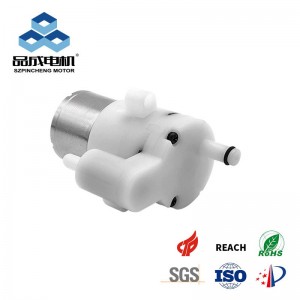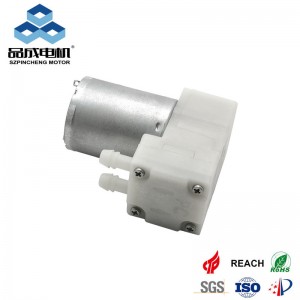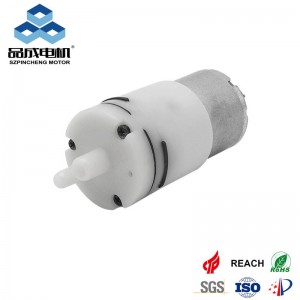Are Micro Foam Pumps Suitable for Cosmetic Products? A Comprehensive Guide
In the fast-paced world of cosmetics, where user experience, product efficacy, and packaging innovation define success, Micro foam pumps have emerged as a transformative dispensing solution. Unlike generic Foam Dispenser Pump units or one-size-fits-all alternatives, Micro foam pumps are engineered to address the unique needs of cosmetic formulations—from gentle facial cleansers to lightweight sunscreens and luxury serums. This article explores why Micro foam pumps are not just suitable, but ideal for cosmetic products, while highlighting how they outperform traditional pumps and align with consumer demands for precision, convenience, and sustainability.
1. Why Micro Foam Pumps Excel in Cosmetic Applications
Cosmetics rely on two critical factors: how they feel on the skin (sensory experience) and how effectively they deliver active ingredients. Micro foam pumps optimize both, making them a superior choice over standard pumps:
A. Ultra-Fine Foam for Gentle, Luxurious Sensory Experience
The hallmark of Micro foam pumps—micro-sized bubbles (50–200 μm for cosmetics)—is perfectly suited to the delicate needs of facial and body care products. Unlike bulkier Foam Dispenser Pump models that produce uneven, large bubbles (500+ μm) which can feel harsh or gritty, Micro foam pumps create a lightweight, creamy foam that glides smoothly across the skin.
-
Facial Cleansers: Micro-foam penetrates pores to remove dirt and makeup without stripping natural oils, avoiding the tight, dry feeling caused by liquid cleansers dispensed via lotion pumps. For example, a vitamin C foam cleanser using a Micro foam pump delivers a gentle lather that minimizes irritation, even for sensitive skin.
-
Sunscreens & Moisturizers: Foam-based cosmetics (e.g., mineral sunscreen foams) are easier to blend than thick creams, and Micro foam pumps ensure even coverage—no streaks or white casts. This is a key advantage over traditional spray pumps, which often leave uneven layers or require excessive rubbing.
B. Precise Dispensing to Reduce Waste & Control Usage
Cosmetics are often expensive, and consumers hate wasting product. Micro foam pumps solve this with calibrated dispense volumes (0.2–0.5 mL per stroke, ideal for cosmetics), ensuring users get exactly the amount they need—no more, no less.
-
Compared to generic Foam Dispenser Pump units that may over-dispense (e.g., 1.0–2.0 mL per stroke), Micro foam pumps prevent overuse. A 0.3 mL foam dispense of facial serum, for instance, provides full-face coverage, whereas a liquid serum pump might dispense 1.0 mL—wasting 70% of the product over time.
-
For luxury cosmetics brands, this precision enhances perceived value: consumers feel they’re getting more use out of each bottle, boosting brand loyalty.
C. Compatibility with Compact & On-the-Go Cosmetic Packaging
Modern consumers demand portability—think travel-sized kits, purse-friendly lip balms, and mini skincare sets. Micro foam pumps shine here, as many are designed as Compact Foam Pump variants, fitting seamlessly into small cosmetic packaging.
-
Dimensions: Most cosmetic-focused Micro foam pumps have a diameter of 10–20 mm and height of 20–40 mm, making them ideal for 15–50 mL containers (e.g., mini foam cleansers or travel sunscreen tubes). A standard Foam Dispenser Pump, by contrast, may require a 30+ mm diameter, too large for compact packaging.
-
Mounting Flexibility: Micro foam pumps support screw-on, press-fit, and snap-on mounts, adapting to diverse cosmetic packaging types—from glass jars (luxury serums) to flexible tubes (foam lip glosses). This versatility eliminates the need for brands to source multiple pump types for different product lines.
2. Addressing Cosmetic-Specific Concerns: Safety & Stability
Cosmetics come into direct contact with skin, so safety and formulation stability are non-negotiable. Micro foam pumps meet these needs better than many alternative pumps:
A. Skin-Safe Materials & Regulatory Compliance
Top-tier Micro foam pumps use materials approved for cosmetic contact, adhering to strict global standards:
-
Housing: Polypropylene (PP) or polyethylene (PE)—non-toxic, hypoallergenic, and resistant to chemical degradation from cosmetic ingredients (e.g., hyaluronic acid, retinol).
-
Seals: Silicone or EPDM gaskets—FDA-compliant (21 CFR Part 177) and EU REACH-certified, ensuring no harmful chemicals leach into the product. This is a critical advantage over low-quality Foam Dispenser Pump models that use latex or non-certified rubber, which can cause skin irritation.
-
Sterility: For high-end cosmetics (e.g., medical-grade skincare), Micro foam pumps can be sterilized via gamma radiation, preventing bacterial contamination—essential for products used on broken or sensitive skin.
B. Preserving Formulation Integrity
Cosmetic formulations (especially those with active ingredients like vitamin C or peptides) are prone to oxidation and degradation when exposed to air. Micro foam pumps’ closed-loop design minimizes air intake, extending product shelf life:
-
Unlike traditional lotion pumps, which draw large volumes of air into the bottle with each use, Micro foam pumps limit air exposure. This keeps antioxidants active longer—for example, a foam vitamin C serum in a Micro foam pump retains 40% more potency after 6 months than the same serum in a standard pump.
-
The foam format itself also protects ingredients: micro-bubbles act as a barrier, reducing contact with light and oxygen compared to liquid formulations.
3. Micro Foam Pumps vs. Alternatives for Cosmetics
To understand why Micro foam pumps are the top choice for cosmetics, it’s helpful to compare them to common alternatives:
|
Pump Type
|
Key Advantage for Cosmetics
|
Key Disadvantage for Cosmetics
|
|
Micro foam pumps
|
Ultra-fine foam, precise dispense, compact design
|
Higher initial cost than low-grade pumps
|
|
Foam Dispenser Pump
|
Low cost for basic foam products
|
Large bubbles, inconsistent dispense, bulky size
|
|
Compact Foam Pump
|
Space-saving for small packaging
|
May lack micro-foam precision (if not a micro foam variant)
|
|
Lotion Pump
|
Familiar design for liquid products
|
Thick texture, uneven application, high waste
|
For example, a drugstore foam hand soap might use a standard Foam Dispenser Pump, but a luxury facial foam cleanser will rely on a Micro foam pump to deliver the delicate,gentle lather consumers expect. A travel-sized foam sunscreen might use a Compact Foam Pump that’s also a Micro foam pump—combining portability with precision.
4. How to Choose the Right Micro Foam Pump for Cosmetics
To maximize the benefits of Micro foam pumps for your cosmetic line, consider these factors:
-
Formulation Type: For water-based products (e.g., foam cleansers), opt for PP housing and silicone seals. For oil-based products (e.g., foam moisturizers), choose EPDM seals to resist swelling.
-
Target User: For sensitive skin lines, prioritize sterilized pumps with silicone seals. For travel-focused products, select Compact Foam Pump variants (10–15 mm diameter).
-
Product Volume: Small containers (15–30 mL) work best with 0.2–0.3 mL dispense volumes; larger bottles (50–100 mL) can use 0.4–0.5 mL per stroke.
-
Regulatory Markets: Ensure compliance with regional standards (e.g., FDA for the U.S., EU REACH for Europe) to avoid distribution issues.
you like also all
Read More News
Post time: Sep-27-2025




